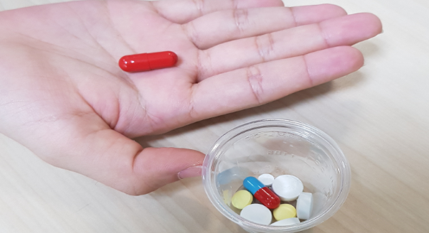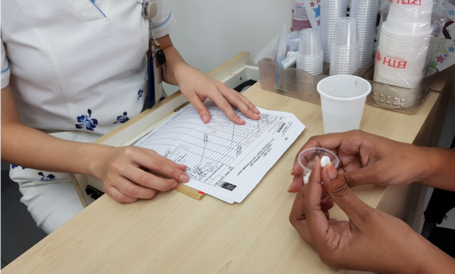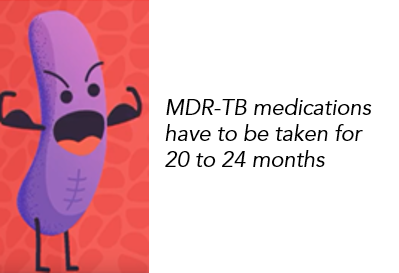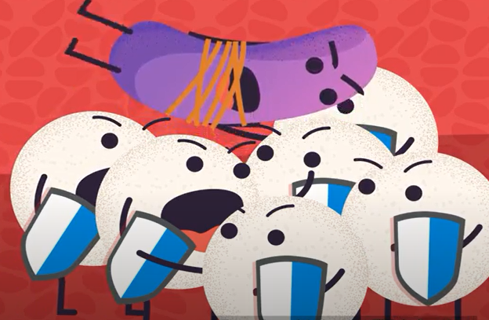Download English PDF, 1.34MB, PDF
Download Chinese PDF, 1.21MB, PDF
Download Malay PDF, 1.42MB, PDF
Download Tamil PDF, 1.10MB, PDF
How is Tuberculosis Treated?
Although tuberculosis (TB) is a serious disease, it can be completely cured with proper treatment.
TB is treated by taking a combination of medicines for a total of six to nine months. Most of these are in the form of tablets. Some people may also require injections for a few weeks.

Most people diagnosed with TB need not be hospitalised for treatment.
However, all TB patients would need to undergo Directly Observed Therapy (DOT), a requirement under the National Tuberculosis Programme (NTBP). During this therapy, patients take their TB medicines under supervision at a polyclinic close to their home or workplace.

Directly Observed Therapy (DOT)
What are Some Side Effects of Tuberculosis Medications?
The medicines used to treat TB are generally safe.
However, some patients may experience the following side effects:
- Giddiness
- Skin rash
- Fever
- Jaundice (yellowing of the skin or eyes)
If you experience any of the above side effects, please inform your doctor or healthcare team immediately.
In addition, certain TB medicines may cause your urine to turn red or orange. If you experience this, do not be alarmed as it is not harmful. This effect will wear off once the medicine is stopped.
Do I Need to Complete the Full Course of Tuberculosis Treatment?
It is very important to complete the full course of TB treatment as prescribed.
Although you will start to feel better after the first few weeks of treatment, TB bacteria would still exist in your body at this time.
To completely recover from TB, you must complete the full course of medications, even when you no longer experience any symptoms.
What Happens if I Do Not Complete the Full Course of Tuberculosis Treatment?
If you do not complete the full course of TB treatment, the TB bacteria that remain in your body may multiply, causing you to become ill again.
In addition, the TB bacteria may develop to become resistant to the medicines you are taking (i.e. the medicines you are taking will no longer be effective against the bacteria).
Being infected with Multidrug-Resistant (MDR) TB would mean the following:
- You would need to take a different set of medications. Medicines to treat MDR-TB have to be taken for a much longer duration of time and usually cause more side effects.

- The chance of recovery from MDR-TB would be considerably reduced.
- You may spread MDR-TB to your loved ones.
What Else Should I Note When Undergoing Tuberculosis Treatment?
- Undergoing Directly Observed Therapy (DOT), during which you would need to take your TB medications under supervision at the polyclinic, is the best way to ensure a full recovery from TB.
- If you take your medicines as prescribed, you will no longer be infectious after a few weeks and will not spread TB to your family and friends.
- TB cannot be spread by sharing cups and utensils, so you can still have meals with your family during your treatment.
- You can continue to work while you are on treatment.

If you need more information, talk to your family doctor or contact the National TB Care Centre (NTBCC).
